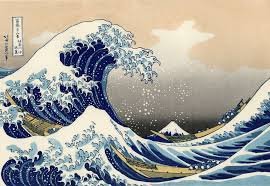JAPANESE ACUPUNCTURE
What is the Hari method of Acupuncture?
Meridian Therapy
Hari is a form of Meridian therapy as refined system of traditional Japanese Acupuncture. Practitioners of this style have developed extraordinary sensitivity to Ki (Chi) through this practice of Ki diagnosis, pulse diagnosis, and non-inserted needling techniques.
The Theoretical Foundation
The theoretical foundation of Hari is derived form the Japanese and Chinese medical classics, in particular the Su Wen, Ling Shu, and Nan Jing. However, Hari is not a theoretical edifice. Rather it is a pragmatic, clinical, intuitive approach to acupuncture practice. Every theory used in Hari practice has been tested and validated through intensive clinical practice and training. The diagnosis process in Hari focuses on meridian relationships, 5-phase and yin-yang theory, and the four inspections, with special attention to Ki. Hari style Ki diagnosis centers on feedback form the pulse to monitor the Ki of the client before, during and after treatment. Treatment centers on supplementing the primary deficiency pattern, or SHO, and balancing the distribution and circulation of Ki within the meridian system. To accomplish this, the practitioner employs a delicate technique (using fine gold or silver needles inserted superficially or only touched to the skin), and applies supplementation or dispersion to deficient or excess meridians. Integral to this style of treatment is a highly refined and effective approach to assessing and treating Ja Ki or evil Ki, using six different techniques.
Gentle, Balancing, Powerful
This system of acupuncture utilizes both non-insertive and insertive techniques. It is very gentle, balancing and powerful; stimulating healing on a deep level and working on the core imbalance. Most patients describe treatments as pleasurable and relaxing yet energizing. It works to enhance the healing process in almost every condition, and multiplies the effectiveness of other natural treatments when used in conjunction with them.
Needle Techniques
For those who are apprehensive of inserted needles, a whole treatment can be done with non-insertive techniques.
Systems of supplementary treatment used include:
· Kikei: Extraordinary Vessels
· Shonishin: Non-Insertive Pediatric Acupuncture
· Shiraku: Bloodletting
· Kinkei: Muscle channel and fire needle
· Shigo: Midday-midnight bipolar relation of the channels
· Ketsubon and Kigai: Treatment of supraclavicular and inguinal regions.
Methods of local treatment:
· Sanshin: widespread style touch needle for tonification and dispersion
· Chishin: shallow or deep retaining needle techniques
· Okyu and Chinetsu_Kyu: direct and indirect moxa
· Sanryoshin: scratching, tapping or microbleeding with three-edge needle
· Hinaishin: Intra/Extradermal needle.
· Gyoshin: Fire needle.
· Kyutoshin: moxa on handle of the needle.
· Magnets, Press balls, Cups
· Other specialized, Non-Insertive acupuncture tools such as Zanshin, Teishin, Enshin.
Follow this link for more information on Acupuncture and its benefits. This leads to an offsite page.


